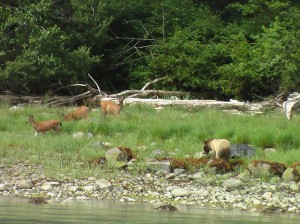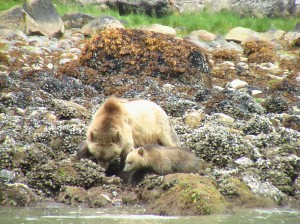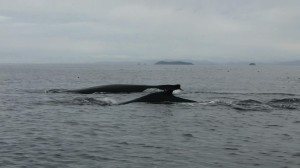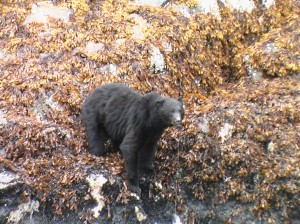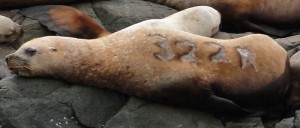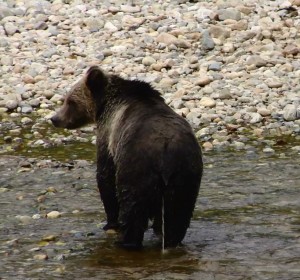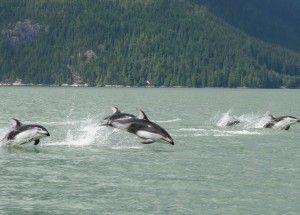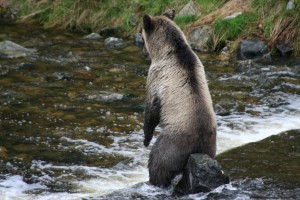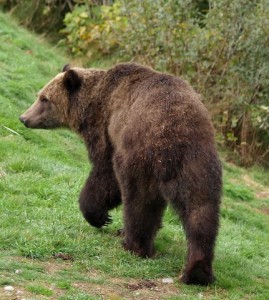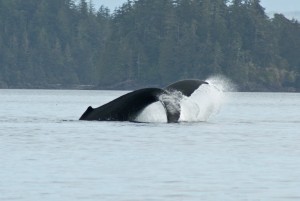
We know what is happening not sure why it is happening. The “Whale Trust website” says the tail lob or tail slap occurs when the whale extends its tail fluke above the water and slaps it forcibly down on the surface. This can be “right way up”, slapping the underneath side of the flukes on the water, or the reverse, with the whale belly-up slapping the dorsal (top-side) of the flukes on the water. This often, but not always, occurs many (35+) times in a row. As with the other behaviors, the meaning behind this behavior is unknown, but it has been speculated that it may be a way to ward off other whales, or to the contrary, to invite other whales to join a group. The explanation seems clear as mud but is sure exciting to watch. This photo by Gary Wilson was from the area of Telegraph Cove on Vancouver Island.
